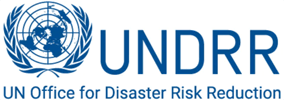The film challenge focussed on what communities are doing to reduce the risk of Floods, droughts, landslides, forest fires and other hazards. Our initial call for films received only a small amount of entries. We redesigned the process and asked for stories from communities at the grassroots level. We then selected six of the best stories and worked with the teams to create short films of resilience.
Earthbeat received 62 submissions and the judging panel selected the six best story ideas and provided support to develop and produce short videos. Each team was given a small bursary to help cover the costs and we provided some filmmaking tips and held online group chats to answer questions on filming and story telling.

We live in a multi-hazard world where risks and disasters can harm anyone, anywhere, but they have the greatest impact on the most vulnerable. Global problems like pandemics or climate change show that we need to cooperate locally and also on a global scale.
Reducing our risk and increasing our resilience to disasters is essential to achieving sustainable development - we need to make sure that we leave no-one behind.
Floods, droughts, landslides and forest fires: What are communities doing to reduce the risk of these and other hazards? We worked with the United Nations Office for Disaster Risk Reduction, UNDRR, to showcase stories of action and cooperation.
UN Office for Disaster Risk Reduction
UNDRR brings governments, partners and communities together to reduce disaster risk and losses to ensure a safer, more sustainable future.
They work to carry out the Sendai Framework for Disaster Risk Reduction, supporting countries, monitoring progress, sharing successful activity.
Sendai Framework (2015-2030)
The Sendai Framework was launched in 2015 to guide progress towards reducing risk from disasters.
The framework has 7 targets and works alongside other international agreements such as the Paris Agreement on Climate Change, and the Sustainable Development Goals.
What is a hazard?
A hazard can be naturally occurring or a result of human activity.
Hazards can harm people, causing loss of life, injury, disease or other health problems. Hazards can damage land, livestock, property, buildings and transport networks.
Hazards can cause social and economic disruption, damage people’s livelihoods and their community networks, or harm the natural environment.
